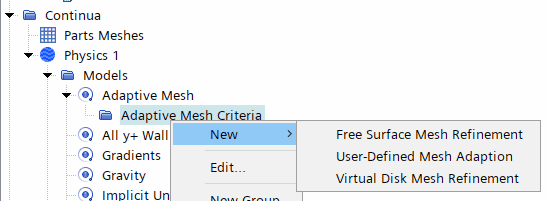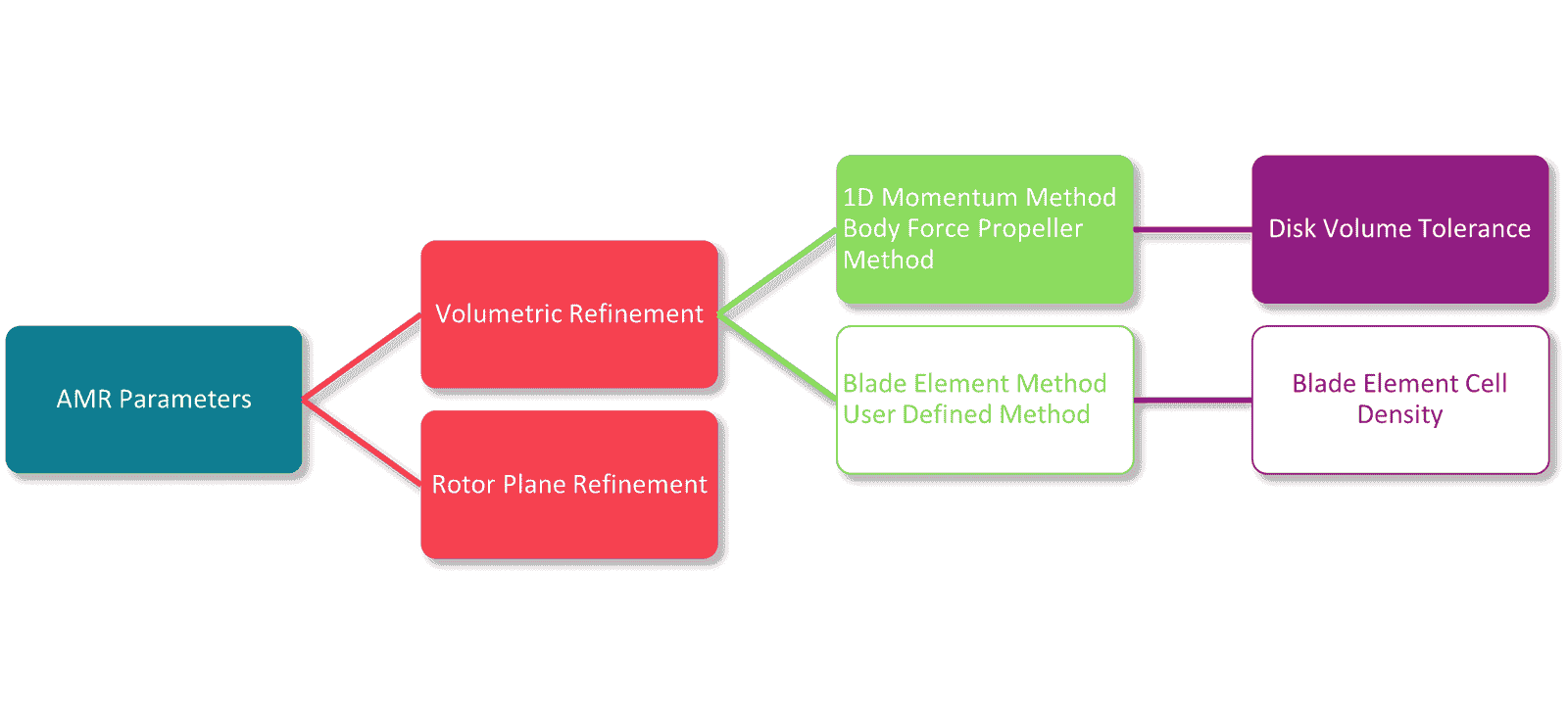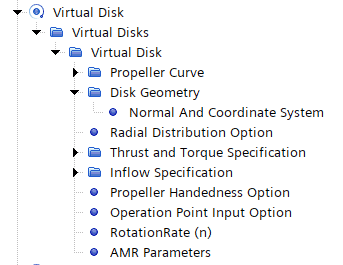The virtual disk class of methods in Simcenter STAR-CCM+ helps you significantly reduce the computational cost of flow simulations with rotating flows, such as wind turbines, pumps, and propellers. With the latest release of Simcenter STAR-CCM+, version 2206, you can now use the Adaptive Mesh Refinement (AMR) model to achieve the optimal resolution of the background mesh for the virtual disk. Find out how to apply the AMR to your virtual disk method and which settings are useful.
Virtual disk methods, such as the blade element momentum, Body force propeller method and 1D momentum method rely on an interpolation grid to mark the cells in the background mesh that occupy the same space as the rotating actuator disk. To obtain a good quality solution of the source term, it is important to consider the recommended dimensions according to the Users Guide as discussed here: Rotating Flow Part 2. Since the distribution along the thickness direction is defined by a Gaussian shape function (Simcenter STAR-CCM+ version 2022.1 news part 3 – Marine application), the cell resolution matters. Examples of such shape functions for different cell layer numbers are shown below.
Previously you had to manually refine the mesh to obtain a fine enough representation of the disk in the solution domain. In case of an insufficient mesh, you might have experienced warnings such as “Disk has no cells” or “Interpolation Grid has Empty buckets“.
Now you can let the model-driven adaptive mesh refinement automatically achieve a suitable background mesh for the virtual disk methods. Using this feature, users can efficiently and easily set up and run simulations with multiple propellers or rotors.
Adaptive Mesh Refinement
Adaptive Mesh refinement in Simcenter STAR-CCM+ is either User-defined or Model-driven. The Model-driven Adaptive Mesh solver refines the mesh to fulfill the specific needs of the physics model. The adaption criteria are provided automatically from the corresponding Simcenter STAR-CCM+ models. The Virtual Disk Mesh Refinement is the latest addition to the this type of AMR.

To apply Virtual Disk Mesh Refinement:
- Add the Adaptive Mesh model to the existing physics continuum which includes the Virtual Disk model.
- Right-click the Adaptive Mesh > Adaptive Mesh Criteria node and select New > Virtual Disk Mesh Refinement.
- The AMR Parameters node appears underneath each virtual disk node

- Select the Virtual Disk Mesh Refinement node and set Max Refinement Level to the maximum number of cell refinements for the virtual disk mesh. For more details, refer to Virtual Disk Mesh Refinement Properties.
- Now we switch to the virtual disk model because we can have several virtual disks in a simulation with different refinement properties. For each virtual disk, select the Virtual Disk > Virtual Disks > [virtual disk] > AMR Parameters node and set the relevant properties.
Depending on the Virtual Disk method you select for the virtual disk, the AMR Parameters node can have different properties:

In this article we apply the AMR to a marine case using the Body Force Propeller Method.
Disk Volume Tolerance
Specifies a refinement criterion based on the relation between the marked discrete volume (VD) and the analytic disk volume (VT), defined as:
